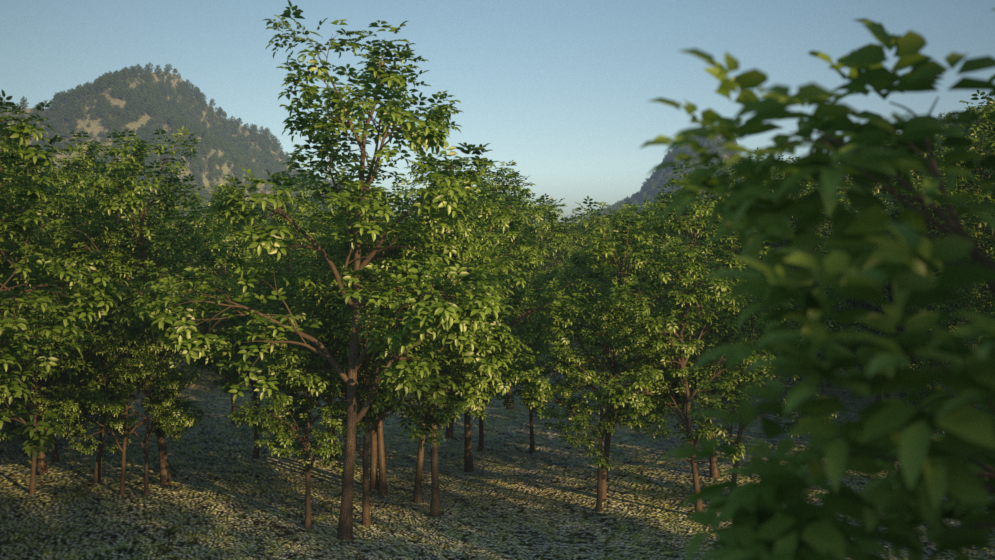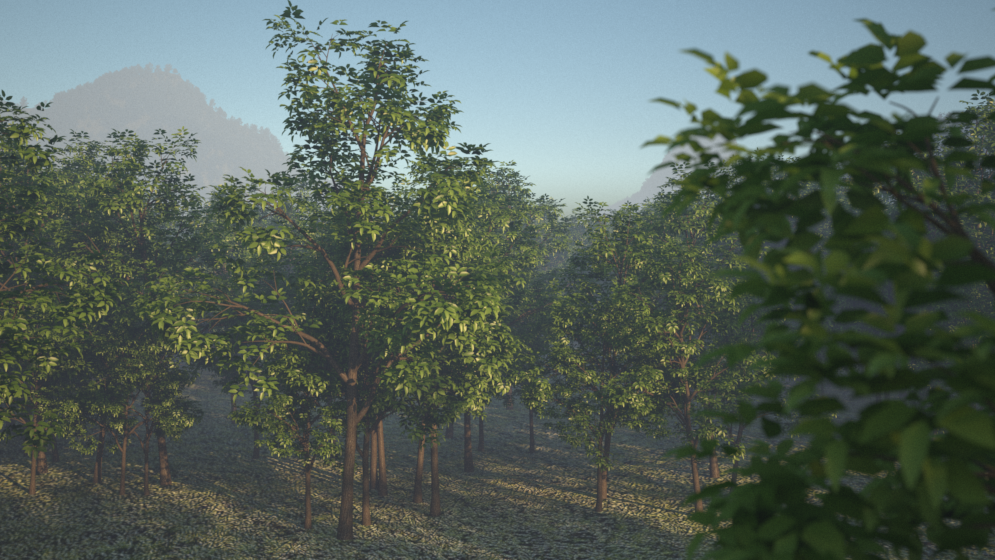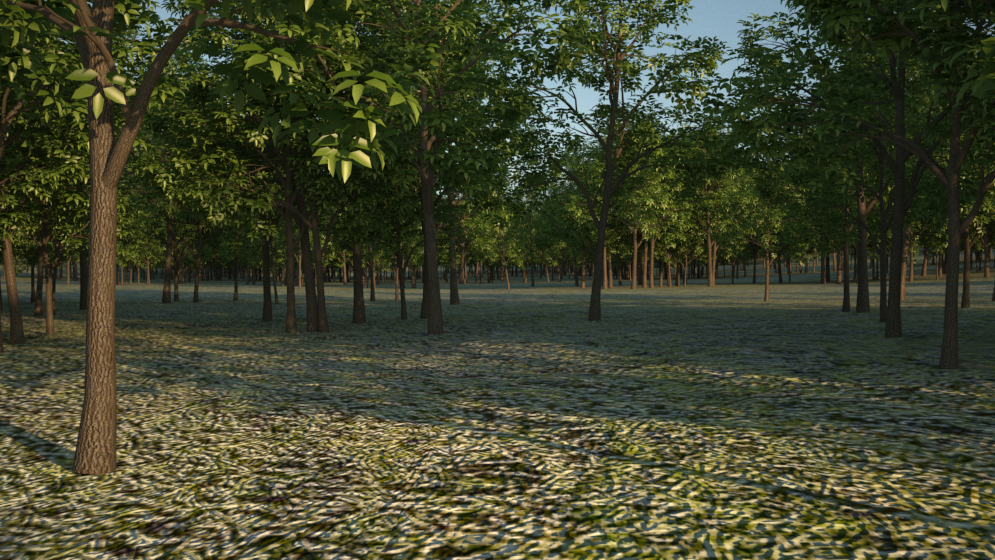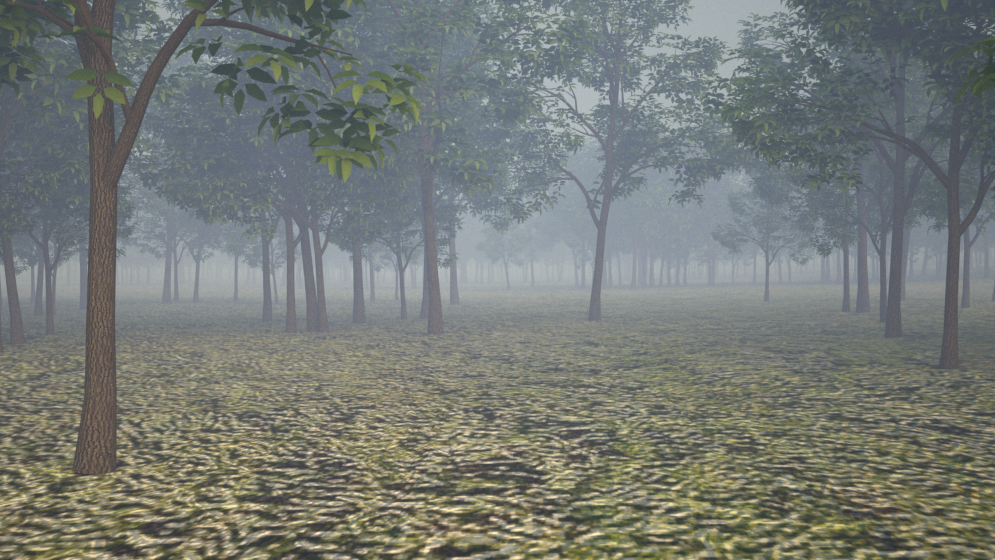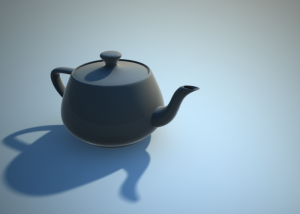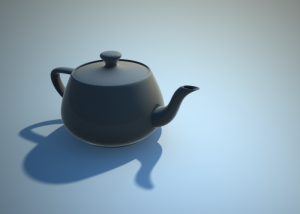Page History
...
Affect Refractions – Determines whether the sky appears in refraction of materials, both perfect and glossy refractions.
Sky model – Determines the procedural model that will be used to generate the VRaySky texture:
...
CIE Clear – When this mode is selected the VRaySky procedural texture will be generated based on the CIE method for clear sky.
CIE Overcast – When this mode is selected the VRaySky procedural texture will be generated based on the CIE method for cloudy sky.
Improved – The VRaySky procedural texture is generated based on the Improved method which has enhanced sunrise and sunset sky.
Horiz illumination – Specifies the intensity (in lx) of the illumination on horizontal surfaces coming from the sky.
Filter Color – Shifts the hue of the V-Ray Sun and Sky system towards the color specified in the field.Ground Albedo – Sets the color of the V-Ray Sun and Sky system's ground.
Color Mode– Affects the way the color in the Filter color parameter affects the color of the sun
Filter – Shifts the hue of the V-Ray Sun and Sky system towards the color specified in the Filter color field.
Direct – Sets the color of the V-Ray sun to match the color in the Filter Color parameter. In this case the intensity of the light does not depend on the V-Ray Suns position in the sky and is controlled through the intensity multiplier.
Override – Sets the color of the V-Ray sun to match the color in the Filter Color parameter. The intensity of the of the light still depends on the V-Ray Suns position in the sky.
Albedo color – Sets the color of the V-Ray Sun and Sky system's ground.
Blend Angle – Specifies the angle in degrees where blending will occur between the horizon line and sky. Values close to 0.0 produce a sharper horizon line, while larger values produce a softer horizon line.
Horizon Offset – Allows the user to manually lower the horizon line.
VRay Aerial Perspective rollout
The VRayAerialPerspective atmospheric effect simulates aerial perspective - the effect that the Earth atmosphere has on the appearance of objects that are viewed from a distance, and which is similar to fog or haze. The atmospheric effect works together with the VRaySun and the VRaySky to calculate an approximation to the aerial perspective effect. It is faster to calculate than the VRayEnvironmentFog atmospheric, although the result is just an approximation - for example, the VRayAerialPerspective atmospheric cannot produce volumetric shadows.
Enable aerial perspective – Turns on/off the aerial perspective effect.
View distance – specifies the distance, in meters, at which the fog has absorbed 90% of the light coming from objects behind it. Lower values make the fog appear more dense, while larger values reduce the effect of the aerial perspective. For more information, see the Visible Distance example below.
Atmospheric height – the height of the atmosphere layer, in meters. Lower values can be used for artistic effects. The value is in meters and is converted internally based on the current 3ds Max units. For more information, see the Visible Height example below.
Inscatter light mult – controls the amount of sunlight scattered from the atmospheric effect. The default value 1.0 is physically accurate; lower or higher values could be used for artistic purposes.
Affect environment rays – when Disabled, the atmospheric effect is applied only to camera rays that hit actual objects, but not to rays that hit the sky. This is because the VRaySky texture already takes into account the amount of scattered sunlight. However, it is possible to enable this option for artistic effects, especially with low visibility ranges. For more information, see the Affect Environment Rays example below.
Affect background - Specifies whether the aerial perspective effect is applied to the background.
Filter color – Affects the color of the unscattered light.
| Anchor | ||||
|---|---|---|---|---|
|
Example: Visibility Distance
| Section | ||||||||||
|---|---|---|---|---|---|---|---|---|---|---|
|
Anchor visHeight visHeight
Example: Visibility Height
| Section | ||||||||||
|---|---|---|---|---|---|---|---|---|---|---|
|
Anchor affectEnvironmentRays affectEnvironmentRays
Example: Affect Environment Rays
| Section | |||||||||||||||||||||||||
|---|---|---|---|---|---|---|---|---|---|---|---|---|---|---|---|---|---|---|---|---|---|---|---|---|---|
|
Shadows rollout
Cast Shadows – When enabled, the sun will produce shadows.
Cast Shadows from environment – When enabled, the sun will produce shadows from volumetric effects.
Shadow subdivs - Controls the number of samples for the area shadow of the sun. More subdivs produce area shadows with better quality but render slower.
Shadow bias – Moves the shadow toward or away from the shadow-casting object (or objects). If the bias value is too low, shadows can "leak" through places they shouldn't, produce moire patterns or make out-of-place dark areas on meshes. If bias is too high, shadows can "detach" from an object. If the bias value is too extreme in either direction, shadows might not be rendered at all. For more information, see the Shadow Bias example below.
Shadow Color – Allows the user to set the color of the V-Ray Sun and Sky shadows
| Anchor | ||||
|---|---|---|---|---|
|
Example: Shadow Bias
Turbity: 5.0, Intensity multiplier: 1, Size multiplier: 5.0
| Section | |||||||||||||||||||||||||
|---|---|---|---|---|---|---|---|---|---|---|---|---|---|---|---|---|---|---|---|---|---|---|---|---|---|
|
Options rollout
Invisible – Controls whether the shape of the light source is visible in the render result. When this option is enabled, the light source is not visible in the rendering. When this option is disabled, if the light source is seen directly by the camera or through refractions, it appears in renderings in the current light color.
Note: The visibility of the light with respect to reflections is controlled by the Affect Specular and Affect Reflections options rather than the Invisible parameter.
Affect Diffuse – Determines whether the light affects the diffuse properties of the materials.
Affect Specular – Determines whether the light affects the specular of the materials. This means glossy reflections.
Diffuse contribution – A multiplier for the effect of the light on the diffuse component.
Specular contribution – A multiplier for the effect of the light on the specular component.
UI rollout
Locator scale – Multiplies the size of the locator in the viewport. This does not affect the rendering.
Target distance – Controls the distance of the the spotlight target in the UI.
...

